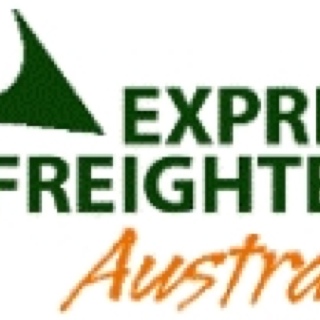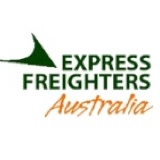Information
-
Audit Title
-
Document No.
-
Client / Site
-
Conducted on
-
Prepared by
-
Location
-
Personnel
-
Freight shed Ramp
- Ramp Audit
- Ops-CSA combo
- Flight ppwk
- Cargo operations
- Device contractor
- Environmental
-
Port
- CNS
- TSV
- BNE
- SYD
- MEL
- LST
- HBA
- PER
- AKL
- CHC
-
Flight Number
-
Movement
- Arrival
- Departure
- Turnaround
-
A/C
- XMB
- XML
- XMO
- XMR
- EFR
-
Scheduled Flight Period Date
Ramp and Aircraft Arrival
-
Are ramp staff ready in sufficient time for the aircraft arrival and safely positioned for the aircraft arrival?
-
Are stairs in a serviceable condition prior to use ie:- rubber buffers, slide rails?
-
Check the serviceability of GSE. Are tyres, lights, rubber buffers, safety rails and vehicles serviceable?
-
Safety zone clear
-
Is the Ramp area properly cleared in preparation for aircraft arrival; ie:- all equipment behind limit lines including rolling stock?
-
Is the apron clear of FOD (including general rubbish around the building line, uncollected equipment; eg:- wooden pallets, catering items, waste)?
-
Do staff pick-up FOD? Are there FOD bins?<br>
-
Was the aircraft correctly Marshall using correct hand signals onto bay or stand?
-
Is a clear thumbs-up given by handling staff for clearance to approach aircraft after the aircraft’s anti-collision lights are turned off, the engines shutdown and chocks inserted?<br>
-
Have safety cones/ witches hats been deployed in front and behind engines or strategically positioned?
-
Are operators complying with the Standard Operating Procedure for Circle of Safety?<br> <br>
-
Is the marshalling of vehicles such as high-lifts and stairs done in a consistent, professional manner when equipment is positioned to the aircraft?
-
Are NO SMOKING regulations strictly enforced around our aircraft operations?<br>
-
Are vehicles and equipment on the Ramp operated at a safe speed (ie:- walking speed around )?
-
Is the tarmac clear of grease/oils that could result in a slippery surface (particularly under engines and near GSE parking)?<br>
-
Do Ramp staff wear Personal Protection Equipment (PPE) as required ie:- hearing protection, safety shoes, hi-vis vests, and where appropriate, bump hats?
-
Do staff observe the “no seat no ride” rule?<br>
-
Are safety rails used on equipment fitted with them, especially when being operated in a raised position?<br> <br> <br> <br>
-
When servicing the toilet system, do the staff wear appropriate Personal Protection Equipment (PPE) ie:- face shield, gloves, apron, hearing protection?
-
Are ramp staff aware of the procedures when either the forward or rear lower cargo doors have a faulty latch or unserviceable counter balance.<br>
-
Additional information
-
Pictures taken
Unloading/ Loading
-
Is the Cargo Door Opening procedures completed by Flight Crew or Engineers (not ramp staff)?<br>
-
Is the correct gap maintained between the rubber bumper of the GSE equipment and the aircraft?<br>
-
Do operators of high-lift equipment ie:- passenger steps and catering vehicles, ensure guard/hand rails are fully retracted before positioning to the aircraft and are they fully extended to aircraft fuselage after positioning to the aircraft?<br>
-
Are equipment, work stands and vehicles positioned in such a way as to prevent aircraft door damage should the aircraft settle during unloading/loading? <br> <br>
-
Are they monitored?
-
Are container loader guides used on JCPLs for off and on loading of ULDs?<br>
-
Are belts in fully down position and handrails lowered when mobile beltloaders (conveyors) are driven around the apron?<br> <br>
-
Do drivers towing baggage carts/rolling stock follow a safe path when approaching and leaving the aircraft?<br>
-
Do drivers come to a complete stop before releasing rolling stock from tugs?<br>
-
Are brakes/chocks applied (where fitted) to rolling stock when parked?<br> <br>
-
Are all stabilisers deployed when GSE positioned at aircraft (where fitted)?<br>
-
Is the fuelling vehicle provided with a clear exit from the aircraft? (nothing blocking it in vehicles/rolling stock)<br> <br>
-
Do operators observe the no parking/no go, hazard zone areas of under aerobridges?<br> <br>
-
Do all unattended motorised vehicles/equipment have engines off and hand brakes applied?<br> <br>
-
Do Ramp staff avoid the jet blast and engine intake areas?<br> <br> <br> <br>
-
Is the person responsible for supervising the loading of the aircraft in attendance at all times when loading is in progress?<br> <br> <br> <br> <br>
-
Is the aircraft inspected to check for main deck cargo lock configuration and determination of any lock movements requirements? Are lock movements coordinated with the Engineers?
-
Is the aircraft loaded according to ALM/ RHM loading procedures?
-
Are supernumerary passengers who walk across the Ramp to/from the aircraft escorted and directed away from hazards eg:- fuel vents, jet blast?<br>
-
Are the correct container cards used for baggage & cargo? Are the container cards marked with Flight No., Date, Destination and Weight?<br>
-
Are cargo ULDs/barrows crosschecked and validated against the corresponding LIR?<br> <br> <br> <br>
-
Does the Loading Supervisor inspect all ULDs for damage or deformation prior to loading? <br> <br>
-
Does the Loading Supervisor inspect all Horse Containers for serviceability in accordance with the ALM? <br> <br><br>
-
Do ULD’s properly secure their contents, are all restraining straps in position.
-
Is the Aircraft Loading Checklist completed correctly and signed on completion?<br>
-
Has the Loading Supervisor noted the container volumes/pieces and any deviations in the Departure Report field on the LIR?<br>
-
Was the provisional load sheet/ Captain's Update, LIR, and NOTOC provided to operating crew prior to departure? Note time provided at time of departure.<br>
-
Has the Loading Supervisor printed their name and signed the LIR on completion of loading?
-
Are livestock secured correctly?<br>
-
Are any special loads secured correctly? (Engines, overhangs, etc.)
-
Does the Loading Supervisor enter the hold to check locks are activated where there are no fits and ensure door sills and bulk webbing is properly done up?
-
Did all loading staff receive a copy of Load Instruction Report (LIR) before loading commenced?<br>
-
Additional Information
-
Pictures
Freight shed / Paperwork
-
Record the number of the latest revision for;
-
ALM Manual
-
Ramp Handling Manual
-
Standing Orders for weight and balance manual or ALM
-
Weight and Balance Important Notices
-
Qantas Group Dangerous Goods Manual
-
Have staff completed a self audit in the last 6 months. Note date of self audit and obtain results
-
List the Audit Findings (Item Number only) from the preceding mandatory submission of the Ramp Self-Audit Checklist?<br> <br>
-
Are the Corrective Actions associated with previous audits finalised? If “No”, must provide reason(s).<br>
-
Has the Loading Supervisors of the flight/flights observed completed Loading Supervisor training? Obtain name and crosscheck against training records.<br>
-
From a sample of four operators, have they completed appropriate Ramp and ALM training for the equipment they operated and the loading/unloading tasks? Obtain names and crosscheck with records.<br>
-
From the last five (5) flight files, is there a copy of the:-<br>
-
Signed NOTOC?
-
Provisional Loadsheet/ Captain's update
-
Signed copy of LIR
-
Completed Aircraft Loading Checklist?
-
Signed Aircraft Loading Checklist?
-
How long are copies of documents kept? Site oldest document (must keep up to 90 days)
-
Is filing system for documents accessible and functional?
-
Service Provider will ensure that suitable equipment is used for the accurate weighing of cargo. Such equipment must be inspected and calibrated on a regular basis (at a frequency prescribed by local weights and measures authorities) and where applicable tagged or labelled to indicate calibration currency. Proof of such is to be available for inspection.<br>
-
Service Provider will ensure that they have a satisfactory communications system in place between Load Control and Ramp, to ensure that relevant uninterrupted information can be relayed quickly and effectively.<br>
-
Sight Dangerous Goods Training records for Ramp staff
-
Discuss with Ramp staff process for advising of a loading or dangerous goods Incident. Confirm staff are aware of process and know where appropriate notification form resides.<br>
-
Additional Information
Summary / Additional comments
-
Additional comments about audit
-
Add media
Sign Off
-
Enter the date and time
-
Comments
-
Represenattive Signature
-
Auditor Signature








